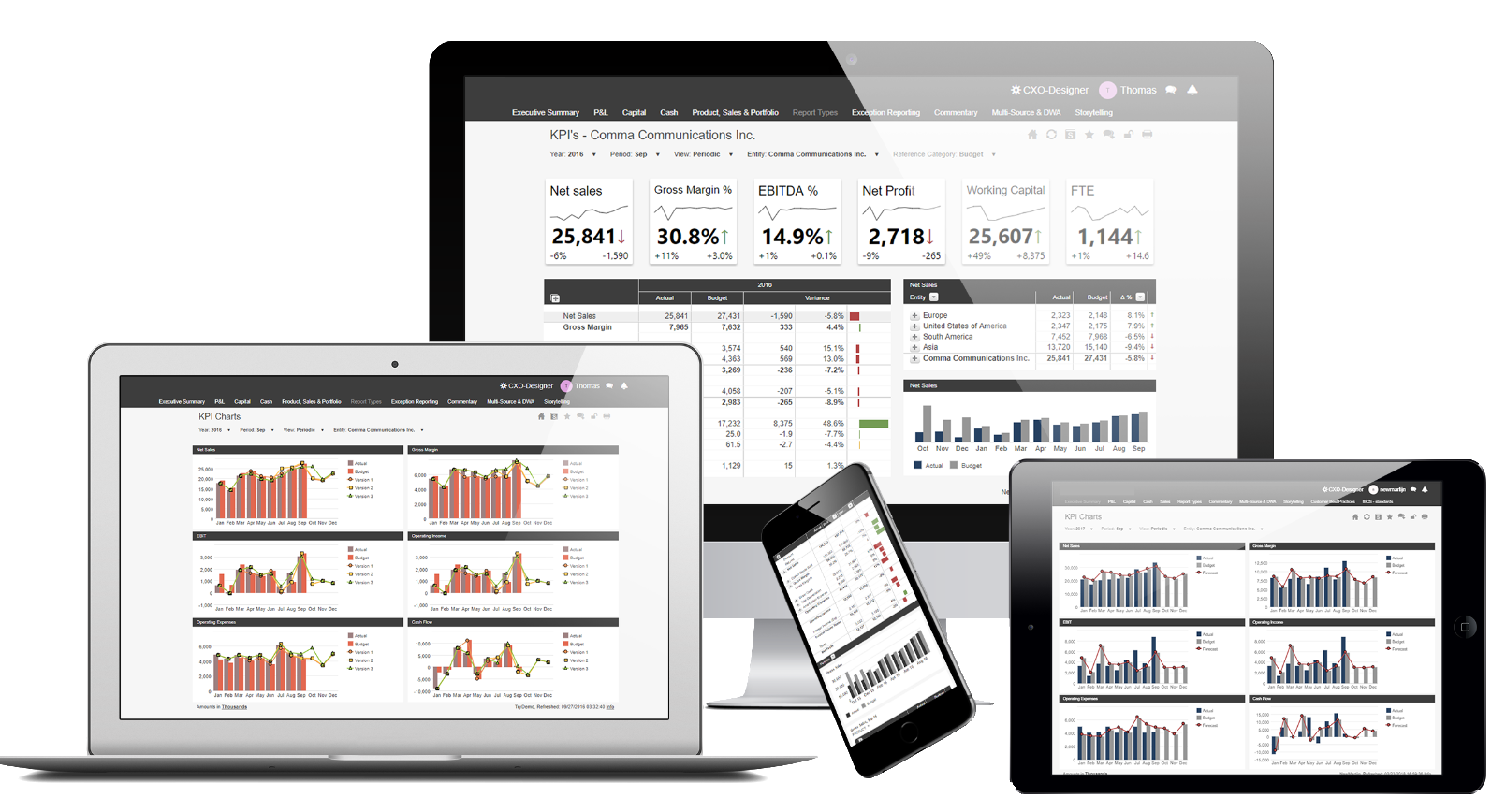 When the iPhone was introduced in 2007, we had no idea how much life was about to change. In a dozen years, we’ve progressed from basic phones to handheld computer devices with hundreds of apps. We can pay bills, have lunch delivered, schedule a ride; in fact, we do almost everything on our phones except make calls.
When the iPhone was introduced in 2007, we had no idea how much life was about to change. In a dozen years, we’ve progressed from basic phones to handheld computer devices with hundreds of apps. We can pay bills, have lunch delivered, schedule a ride; in fact, we do almost everything on our phones except make calls.
But the digital age has impacted more than just our cell phones: It’s coming of age for financial reporting as well.
From Paper to Digital…to Paper?
Financial reporting was first turned on its head with the introduction of Microsoft Excel in 1985. But even thirty plus years later, many executives have not moved past the need for printed paper reports.
While there’s nothing inherently wrong with wanting a hard-printed copy of a report, there is no need to continue using the same outdated tools to create those paper reports. Today, finance teams have the chance to access centralized platforms that can connect multiple—and even disparate—data sources to combine rich, meaningful data that drives insights for the executive team.
The ability to connect data sources to put the right data in the right order is what gives finance users the ability do more than just spit out numbers. It empowers teams to tell the true story of the business.
Technology is More than Just Excel
Many finance teams feel the squeeze to do more and more with fewer and fewer resources. They’re pressed to produce more information in a better format, often at a reduced cost too. So how do finance teams continue to add maximum value?
The answer lies in technology. And we don’t just mean the traditional static Excel reporting.
Static Excel reporting schemes are riddled with pitfalls. They’re disconnected, which means reports are only accurate of a single moment. And typically, by the time the report is used in a board meeting, it is wildly out of date, and thus inaccurate. Manual reporting processes introduce opportunities for data to get out of sync, creating errors that no one is aware of until the numbers don’t add up at the end. And, the static reporting experience is heavy on preparation time, leaving little time for analysis and recommendations.
Traditional reporting is also highly IT dependent, leaving finance beholden to a completely unrelated team to complete financial reporting. True ownership of financial reporting then should lie where the expertise is: in finance.
The Move to Automation
Fortunately, there are tools out there that can push your team to the next generation of financial reporting, automating many manual tasks to free up resources and time and eliminate errors, and keeping finance in control of financial reporting.

Modern, “finance-owned” reporting solutions flip financial reporting on its head. Automated preparation provides users with more time to dig into the data and provide details and context to leadership. Data without context or analysis doesn’t guide the senior team through an analytical process so they can make intelligent business decisions.
But if you can tell the integrated story of performance with the data in a way that is pleasing to the eye, easier to comprehend and includes commentary that underpins the performance numbers, most executives would gladly hand over their old paper reports in exchange.
Digital Storytelling Provides Narrative
Traditional reporting presents the executives with numbers that don’t explain why, they simply show that things are. Digital storytelling, on the other hand, provides a narrative of where the business has been, how it got there, and where it’s headed as a result.

With digital storytelling, finance can communicate performance to the business in a way that business users understand, telling a richer and more complex story that numbers printed on paper. The benefits of storytelling include:
- Giving the senior leadership team what they need to make the right decisions.
- Efficiency to line up commentary with overall numbers.
- One set of reports that provides agility for competitiveness in the marketplace.
- A live, dynamic look at what’s going on right now for insight into how to run the business.
Creating digital storytelling makes it easy to add all the pages you want and put it in a format that best tells the story of your business, not the framework an EPM developer or IT specialist thinks is what you need.
With modern tools to create compelling storytelling reports, you’re able to put all the relevant information together into one set of reports that provide a full picture of the business instead of a single static point in time. Dynamic storytelling gives your enterprise the agility it needs to be competitive in the marketplace.
Are you confident that your reporting is telling the right story?
About the Author
 Dan Phillips, insightsoftware
Dan Phillips, insightsoftware
Dan is a strategic account executive at insightsoftware.com, providers of CXO Software financial report solutions. See how dynamic storytelling can impact your organization’s future. Request a free demo now!

#Financial_Reporting
#Automation
#Excel
#Reporting
#Digital_Storytelling